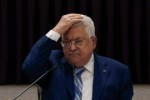How Trump Can Finish the Job in Iran—and the Middle East
Since taking office, U.S. President Donald Trump has gone for gold in the Middle East. He launched a dramatic military operation against Iran’s nuclear program, building on the broader dismantling of the country’s regional power. He then brokered a cease-fire between Israel and Iran and indicated a willingness to talk with the Iranian government. These outcomes have provided hope that if the United States can focus on the essential—the continued containment and further weakening of Iran—and avoid overcommitment to myriad other regional policy objectives, the Middle East might finally have the stability and normalcy it has long lacked.
But the region has seen similar optimism: after the Yom Kippur War in 1974, the defeat of Iran and then Iraq from 1988 to 1991, and after the takedown of the Taliban in 2001. In each case, the Middle East had reached a critical point of danger, prompting successful American intervention, followed by diplomatic campaigns to lock in these moments of stability. The Camp David accords, for instance, normalized relations between Egypt and Israel, and Israel and Jordan later signed a peace treaty of their own.
Yet after brief periods of peace, the region has always devolved back into chaos. First came the Iranian revolution and Soviet invasion of Afghanistan in 1979. The Oslo accords, which set up a peace process between the Israelis and the Palestinians, ultimately collapsed after 2000. The American invasion of Afghanistan after the September 11 attacks, like the Soviet one before it, stretched on for years, and it ultimately ended with the Taliban back in power. The invasion of Iraq heralded two decades of conflict, including indirect fighting with Iran and direct combat against the al-Qaeda offshoot the Islamic State, or ISIS.
This history represents decades-long American policy failures. For years, the United States has managed to secure the Middle East from hostile dominance, but containment policy there differed dramatically from that in Asia and Europe. Asian and European states eventually established stable domestic institutions and regional cooperation systems, leaving the United States to focus on organizing collective security against China and Russia. In the Middle East, however, the United States has had to intervene repeatedly in internal and regional conflicts that undercut stability and containment—even after the Soviet Union passed from the scene.
This time, though, the situation may well be different. Thanks to a year and a half of war, Iran and its proxies are very weak. New leaders are reshaping the region’s power dynamics in Tehran’s absence. The Trump administration thus has a chance to do what its predecessors could not and truly stabilize the region.
Since the collapse of ISIS, Iran has been the Middle East’s primary generator of regional instability. Its proxy groups have unleashed attacks on........






















 Toi Staff
Toi Staff Gideon Levy
Gideon Levy Dr Ramzy Baroud
Dr Ramzy Baroud Rachel Marsden
Rachel Marsden Belen Fernandez
Belen Fernandez Muhannad Ayyash
Muhannad Ayyash Tarik Cyril Amar
Tarik Cyril Amar Somdeep Sen
Somdeep Sen Yara Hawari
Yara Hawari Stephanie A. Sarkis Ph.d
Stephanie A. Sarkis Ph.d Maximilian Hess
Maximilian Hess Sabine Sterk
Sabine Sterk Nick Buxton
Nick Buxton Kamel Hawwash
Kamel Hawwash Santiago Zabala
Santiago Zabala
